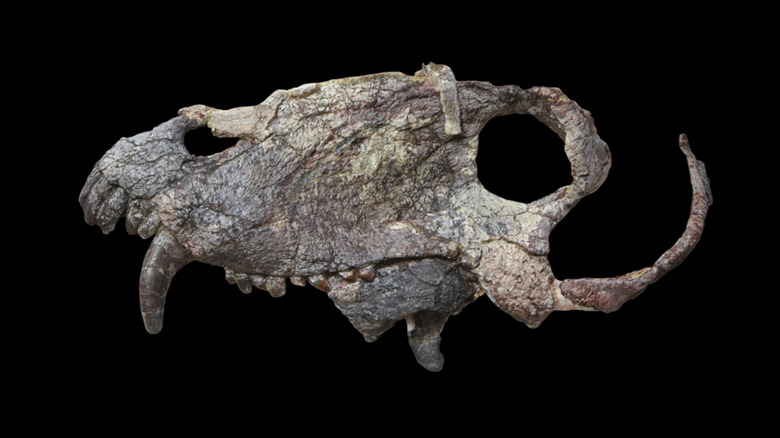This Giant Prehistoric Predator Lived Long Before The Dinosaurs
It's easy to think of dinosaurs as the most ancient of the prehistoric predators. However, the discovery of a skull in Southern Brazil has opened scientists' eyes, revealing that at least one giant prehistoric predator roamed the world before the dinosaurs did.
The predator in question is now known as Pampaphoneus biccai. The skull that researchers found measures roughly 36 cm (14.2 inches), and it was found with skeletal bones near São Gabriel in Southern Brazil. Pampaphoneus is what scientists call early therapsid clade dinocephalia, which is a major group of large and frightening land-born animals.
This group of animals weren't all predators, but scientists say they lived before the dinosaurs that we mostly know today, like the tyrannosaurus rex. While all the others weren't carnivores, the skull found for Pampaphoneus suggests that it certainly was a giant prehistoric predator.
Highly appealing images (although I may be biased) of the preparation of our new Pampaphoneus skull. Trigger warning for an exceptionally beautiful fossil.@the_anilson @voltairearts @PaleoCisneros @MCZHarvard pic.twitter.com/BulUlJVe1Z
— Felipe Pinheiro (@FeliPinheir) September 12, 2023
"The animal had large, sharp canine teeth adapted for capturing prey," Felipe Pinheiro, a paleontologist from the Federal University of Pampa (UNIPAMPA) in Brazil, shared in a statement. The architecture of the skull suggests that the creature had a bite strong enough to chew clean through bones, similar to modern-day hyenas, which also feed on meat and bones.
It's estimated that Pampaphoneus lived at the tail end of the Permian, just before the largest-ever mass extinction event wiped out roughly 86 percent of all Earth's animal species. This extinction event is most commonly known as the "Great Dying." This event saw a large majority of plant and animal forms simply dying out as they struggled to survive.
Researchers are unsure what caused the massive extinction event which wiped out this giant prehistoric predator and its friends, mostly due to a lack of fossils to study. Perhaps these new discoveries could help us learn more about the Permian time period and what drove it to end. For more info on the Pampaphoneus, you can read the new study published in the Zoological Journal of the Linnean Society.
